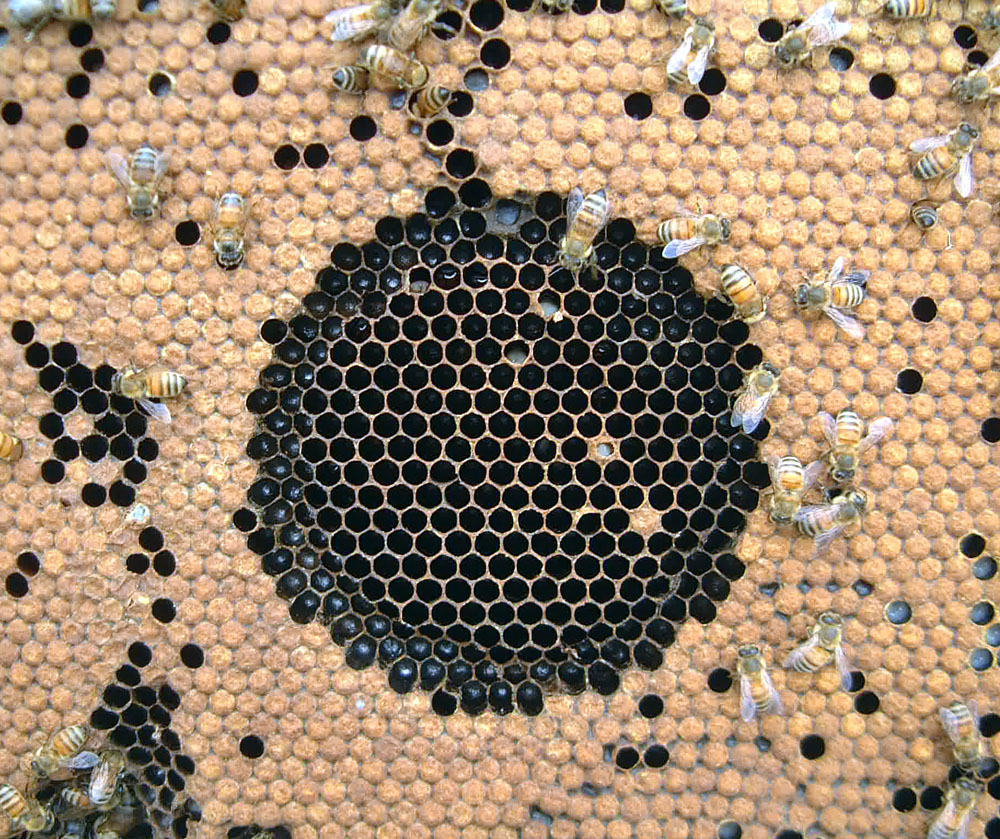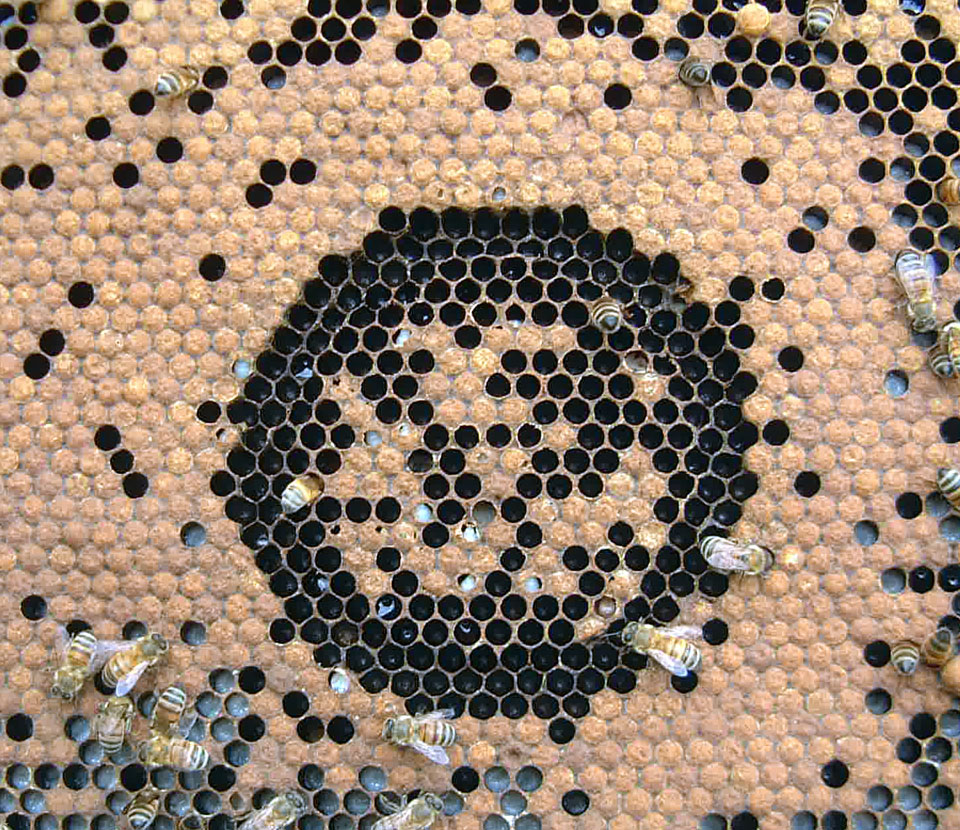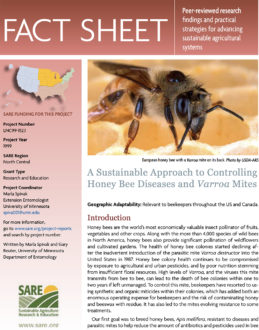Any race or stock of bees can be bred for hygienic behavior. We recommend that beekeepers select for hygienic behavior from among their best breeder colonies (i.e., those that have proven to produce honey, winter well, are gentle and display all the characteristics desired by the breeder). A queen producer can get a head start on selecting for hygienic behavior simply by rearing queens from colonies that do not have chalkbrood.


When colonies are first screened for hygienic behavior using a freeze-killed brood method, they may not remove all of the frozen brood within 24 hours. The colonies that remove the most freeze-killed brood within 24 hours should be propagated by rearing queens from them. Subsequent generations will remove the brood more quickly because hygienic queens from the first generation will produce drones for the second generation. If the hygienic queens are instrumentally inseminated with semen collected from drones from hygienic colonies, or are mated naturally in an isolated area, where all the surrounding drones are from hygienic colonies, it will be easier to fix the trait in your line of bees. In time, if many bee breeders select for hygienic behavior, the frequency of the trait should increase in the general population of bees, which will increase the chances that any queen will encounter drones that carry the trait.
Important note: The effects of American foulbrood, chalkbrood and Varroa mites can be alleviated if queen producers select for hygienic behavior from their own lines of bees. The ability of a colony to remove freeze-killed brood is correlated with disease and mite resistance; however, the actual degree of resistance can only be evaluated in controlled tests when the colonies are challenged with American foulbrood, chalkbrood or Varroa mites.
Our experience has shown there are no apparent negative characteristics that accompany the trait. Years of research experience have shown it would greatly benefit the beekeeping industry to have productive, hygienic queens mated with hygienic drones available commercially (Spivak and Reuter, 1998a, 2001b; Ibrahim et al. 2007).
